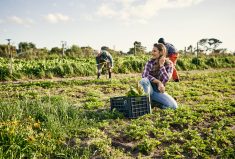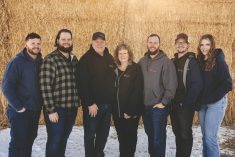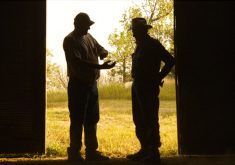We’re told there has never been a time in all of human history when things have changed at such a rapid pace. And this is especially true for agriculture.
Nor are farmers just letting it happen. Instead, they’re embracing lifelong learning to prepare and to adapt, whether it’s learning new software programs, farm business management skills or any of a thousand different things.
Fortunately, the internet has made it easier for those in rural and remote areas to access a wide array of new information from anywhere in the world, provided of course that you can put up with interruptions due to bandwidth and program speed.
Read Also

Ground rules for farm family communications
Establishing meeting ground rules can help your family find ways to communicate that work for your farm. Here are some…
The abundance of learning opportunities is great, but it has a cost too. Somehow you have to choose the ones that will be the best fit for you.
To help you narrow down the options, Country Guide spoke to several educators to get their take on some of the factors you should consider.
First off, Lil Premsukh, chair of business at Conestoga College, warns that as with other things we purchase, whether online or from a bricks-and-mortar store, we need to be careful consumers when choosing an educational product. Premsukh stresses the importance of doing your homework before registering for a course. “Watch for scams. Is it credible? Can you trust it? Will it give you the designation you are looking for?”
Once you’ve determined the course is legitimate and will cover the material you want to learn, there are some things to think about in terms of the delivery. Since the 1970s, several researchers have proposed that we each have a preferred learning style. A quick Google search turns up several theories with different names, although the gist of them all is that different people learn in different ways.
The most popular approach is the VARK model, now widely adopted by schools across Canada. When someone says they are an auditory or kinesthetic learner, this is what they are referring to. Premsukh elaborates on the VARK model:
- V refers to visual learners who learn best by seeing pictures, graphs, charts, and seeing information.
- A is auditory. Auditory learners retain more information through listening and speaking than by other means. Auditory learners may benefit from reading textbooks out loud or discussing material with study groups.
- R stands for reading/writing. Those with this preferred learning style learn best through text-based input and output, including reading and writing in all its forms such as manuals, reports, essays and assignments. These are the people who like words.
- K is for the kinesthetic learners who like hands-on learning. They like to participate in activities by touching, building, moving and drawing.
Of course, some people have no strong preference for any one type of medium and are considered multi-modal learners. Most of us, though, do better with one.
While the concept of preferred learning models has its critics, Patsy Marshall, who has taught adult education for 42 years, says the best online courses will offer something of everything. In the courses she teaches online for McMaster University, participants can read or listen to the lectures, watch them on YouTube, and do practical exercises that appeal to the kinesthetic learners.
Farm Management Canada takes a multi-modal approach with their courses, says executive director Heather Watson. “We apply the Barnum principle to our offerings. There’s got to be something for everyone,” she says. “Some people prefer to do their research and learning in private, some people prefer to engage with others, and some people prefer a combination of both.”
When choosing online courses, it’s important to be aware of whether the timing of the courses is synchronous or asynchronous, says Robert McGray, director of adult education at Brock University in St. Catharines, Ont.
With asynchronous courses, you do the course work solely on your own schedule. People must be self-disciplined with asynchronous courses, says McGray. “They really need to look at their time-management skills,” he says. Premsukh adds that for asynchronous courses, some students find it helpful to slot the time to do the course into their calendars as if they were physically attending a class.
Synchronous courses, like face-to-face classes, require more energy at a specific time. This helps people keep up with the course as the time is more structured, says McGray.
On the other hand, Marshall points out that synchronous courses can be problematic if course participants are in different time zones, especially if group work is required. And for those with a lot of time constraints, asynchronous learning is more flexible, she adds.
Our individual personalities also come into play when choosing the course with the best fit. McGray suggests asking yourself: How much peer support do I want? Am I introverted or extraverted? Do I want group work?
Some people think they can’t get the interaction they seek through an online program, although that has not been Marshall’s experience. Marshall, who has taught online adult education courses for the past four years, says she has been surprised by the quantity and quality of discussion in the online courses she teaches.
“The learners are very engaged,” she says of the online courses which have a discussion forum. “When questions for the forum threads are well-designed, the discussion is really good.”
Is there a difference in the preferences between older and younger learners? It was initially believed that younger people, since they grew up in a digital world, would prefer online learning over face-to-face learning, but this has not proved out, says McGray. “Although younger people initially have more comfort with technology, they don’t necessarily prefer the digital format. It really depends on the nature of the program,” he says.
For farmers, implementation of the information is part of the key to success as opposed to having purely a theoretical understanding, says Watson. “Knowing that, we try to incorporate take-aways or homework into our learning opportunities.”
When choosing an educational activity, it’s also important that the program be pitched at the appropriate level, says Watson. These can vary from general awareness that can be gleaned through reading and attending events, to strategic planning specific to your farm achieved through an intense program, to top up learning such as webinars that keep you up-to-date on new and innovative opportunities.
Often overlooked is the importance of understanding the learning preferences of your fellow farm team, says Watson. This knowledge is essential so you can communicate and teach valuable skills to the other team members, she says.
Sometimes the best option for professional development isn’t a course at all. In other words, sometimes standardized continuing education isn’t the right fit, says Chilliwack, B.C. business coach Pam Paquet.
If you are trying to improve interpersonal skills or to help with managing stress, resolving conflict, or improving communication, on-site training may be a better way to go, says Paquet.
Other options include buying a case of books and having a discussion afterwards or doing a webinar as a group. There are tons and tons of options, she says.
Resources
- Farm Management Canada, a national organization providing farm business management information
- Online university courses including some from Harvard and Stanford are available through Coursera. Some are free such as the “Learning How to Learn.”
- Free courses on a wide variety of topics available through the Kahn Academy
- Want to become a more efficient learner? Check out the books Learning How to Learn and a Mind for Numbers by Dr. Barbara Oakley.
- Learn more about the VARK Preferred Learning Model
















